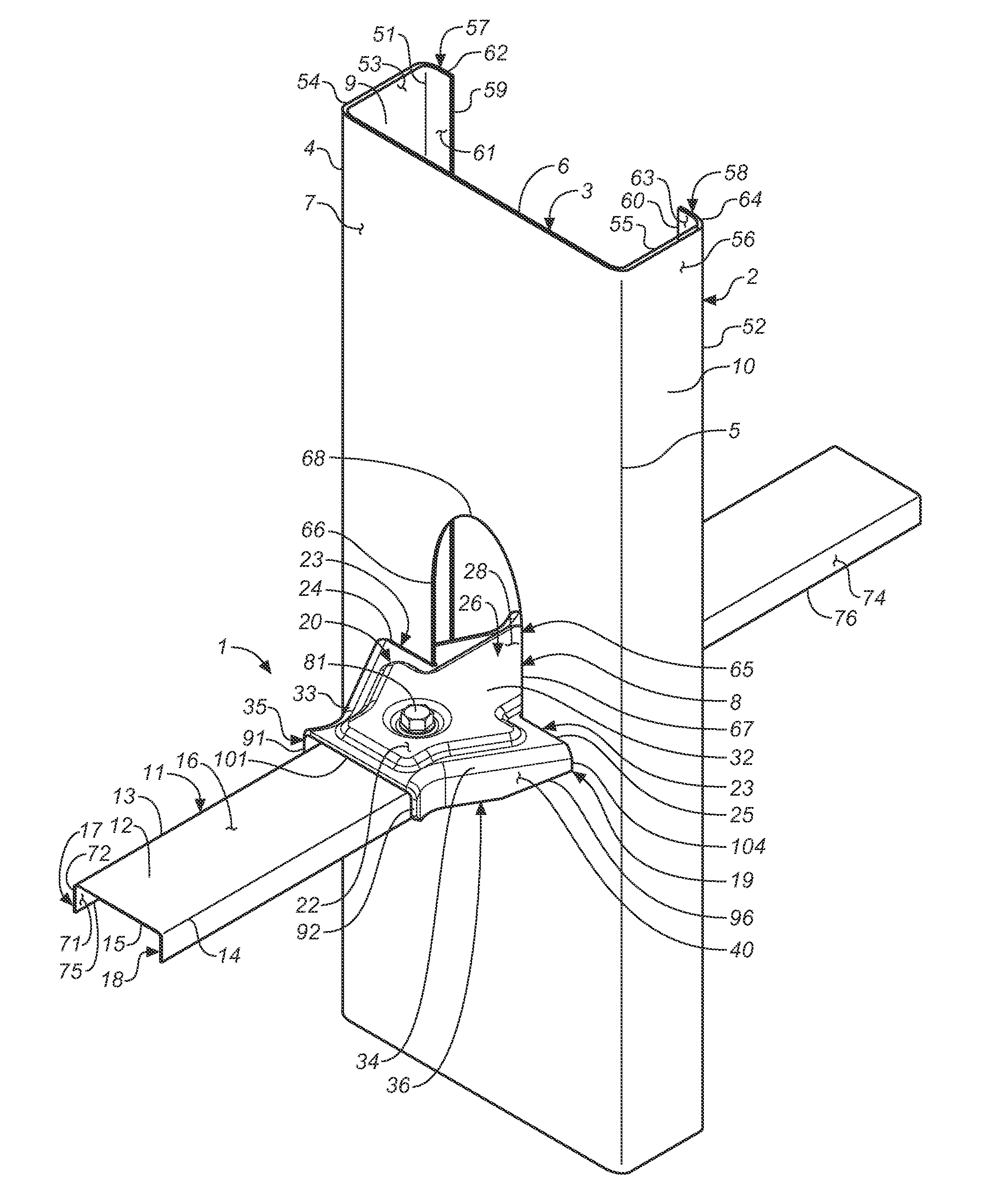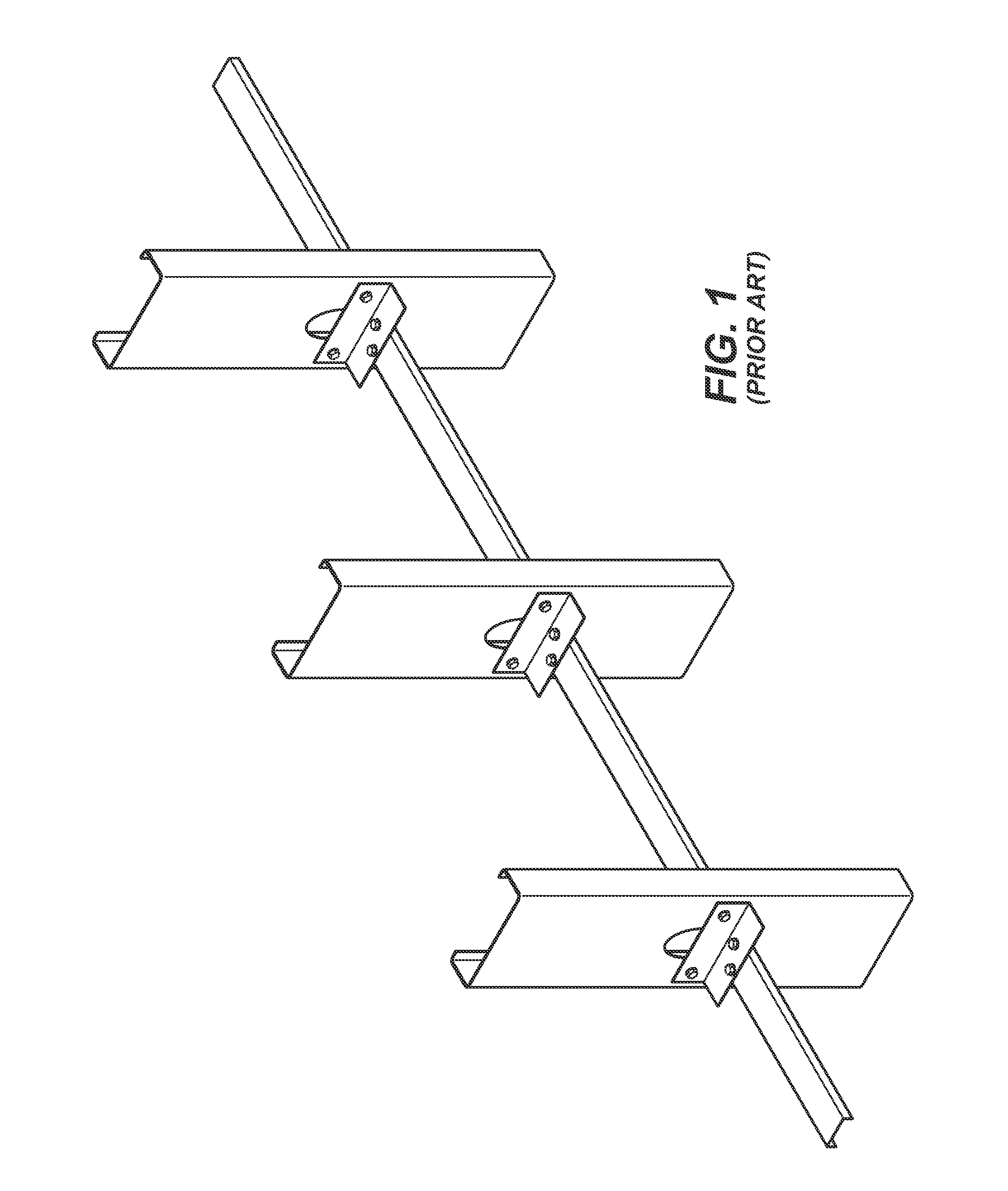Bridging connector
a technology of connecting rods and studs, applied in the direction of girders, fireproofing, building repairs, etc., can solve the problems of reducing the service life of the girder, so as to achieve the effect of exceptional torsional rigidity and exceptional torsional rigidity
- Summary
- Abstract
- Description
- Claims
- Application Information
AI Technical Summary
Benefits of technology
Problems solved by technology
Method used
Image
Examples
Embodiment Construction
[0037]As shown in FIGS. 2, 4A, 4B, 12 and 16, the present invention is a building connection 1 that comprises a substantially vertical wall stud 2, a substantially horizontal bridging member 11, and a separate, distinct bridging connector 19 that attaches the wall stud 2 to the bridging member 11. The wall stud 2 is typically one of several sequentially-arranged, cold-formed steel studs 2 in the frame of a building wall. The bridging member 11 is typically a separate cold-formed steel member that interfaces with and spans a plurality of wall studs 2. A prior art connection is shown in FIG. 1.
[0038]Typically, the wall stud 2 includes a central web 3 having a first side 4 and a second side 5, an inner surface 6 and an outer surface 7, and a elongated opening 8. The central web 3 is typically rectangular and occupies a vertical plane. A first side flange 9 is integrally attached to the first side 4. A second side flange 10 is integrally attached to the second side 5. The first and seco...
PUM
 Login to View More
Login to View More Abstract
Description
Claims
Application Information
 Login to View More
Login to View More - R&D
- Intellectual Property
- Life Sciences
- Materials
- Tech Scout
- Unparalleled Data Quality
- Higher Quality Content
- 60% Fewer Hallucinations
Browse by: Latest US Patents, China's latest patents, Technical Efficacy Thesaurus, Application Domain, Technology Topic, Popular Technical Reports.
© 2025 PatSnap. All rights reserved.Legal|Privacy policy|Modern Slavery Act Transparency Statement|Sitemap|About US| Contact US: help@patsnap.com



